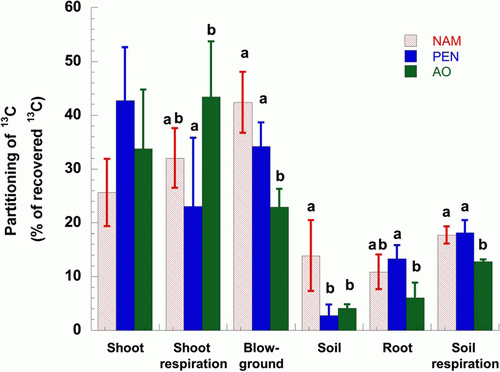ZHAO liang and his team conducted an in situ 13C pulse-labeling experiment from July to September 2011, involving three land use types: native alpine meadow with winter grazing (native meadow), cultivated perennial Elymus nutans (perennial grass), and annual Avena sativa (annual grass) pastures in the Qinghai-Tibetan Plateau.
Thirty-two days after labeling, 32, 23, and 43 % of recovered 13C of native meadow, perennial grass, and annual grass, respectively, were released by shoot respiration, and 43, 34, and 22 % were allocated to belowground C pools. About half of 13C allocated to belowground C pools was released by soil respiration. Mean residence time of net assimilate C in this ecosystem was 67, 118, and 43 days for native meadow, perennial grass, and annual grass, respectively.
The research results imply that species abundance and root/shoot ratio are the major controlling factors of soil C stocks in high-altitude grassland ecosystems, explaining 35 and 73 %, respectively.
Researchers suggest that conversion to monoculture for food production on the Qinghai-Tibetan Plateau may deteriorate soil health through rapid loss of soil organic C. The main cause of C transfer reduction after conversion to monoculture is the change in species richness and root/shoot ratio. Together with previous research studies, the results also support the finding that moderate grazing benefits grassland C transfer and stock, owing to higher species richness and root/ shoot ratio.

Fig. Partitioning of 13C 32 days after assimilating. NAM native meadow,
PEN perennial grass, AO annual grass. Mean±standard deviation are given.
Different letters indicate significant difference among the three land use types at each sampling date (n=4, P<0.05)
Additional Information:
1 Author Information: ZHAO Liang, CHEN Dongdong, ZHAO Na, LI Qi, CHENG Qian, LUO Caiyun, XU Shixiao, WANG Shiping, ZHAO Xinquan.
Correspondence: xqzhao@nwipb.cas.cn.
2 Published: Biol Fertil Soils, 51:781–790, 2015.
